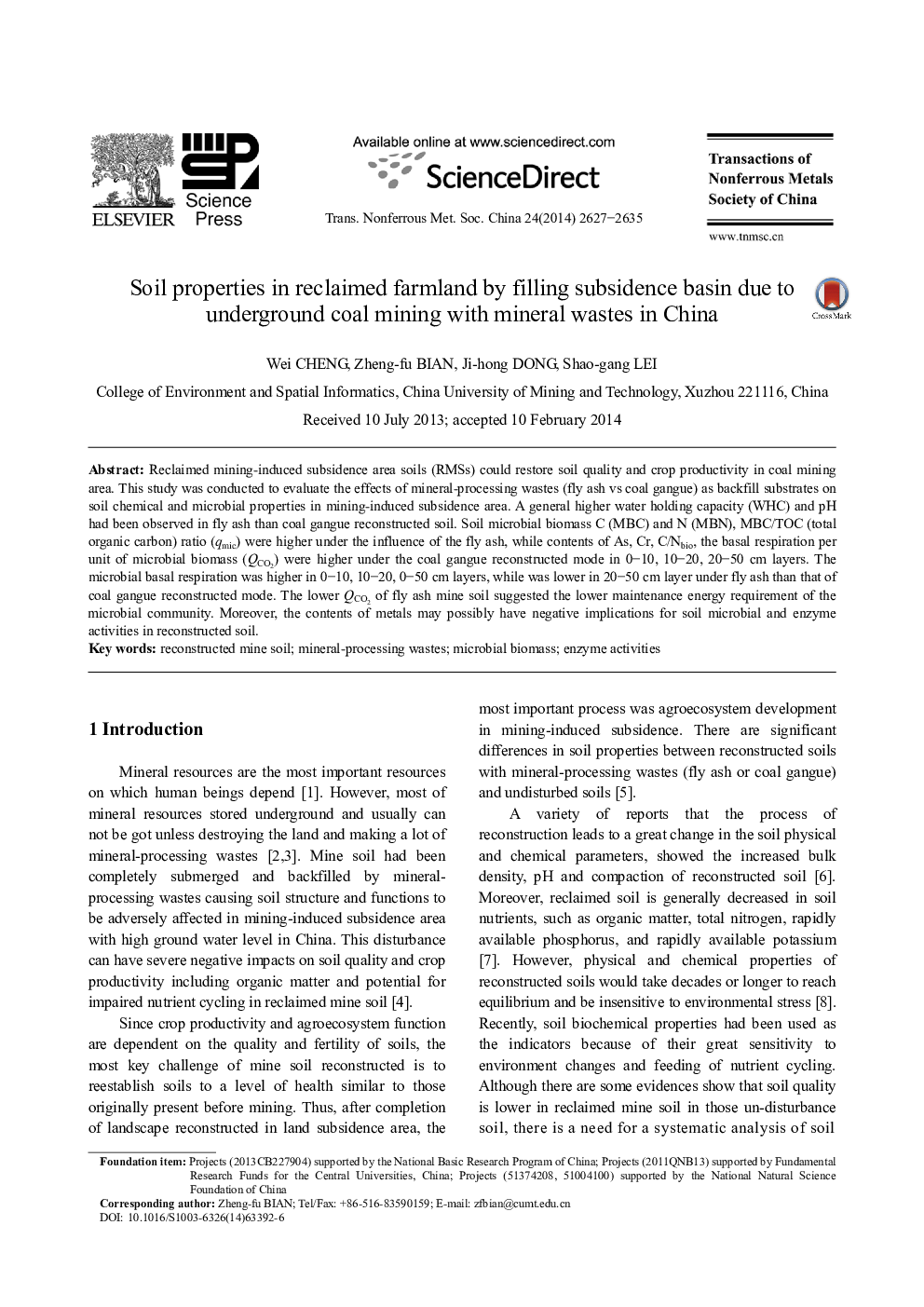| Article ID | Journal | Published Year | Pages | File Type |
|---|---|---|---|---|
| 1637400 | Transactions of Nonferrous Metals Society of China | 2014 | 9 Pages |
Reclaimed mining-induced subsidence area soils (RMSs) could restore soil quality and crop productivity in coal mining area. This study was conducted to evaluate the effects of mineral-processing wastes (fly ash vs coal gangue) as backfill substrates on soil chemical and microbial properties in mining-induced subsidence area. A general higher water holding capacity (WHC) and pH had been observed in fly ash than coal gangue reconstructed soil. Soil microbial biomass C (MBC) and N (MBN), MBC/TOC (total organic carbon) ratio (qmic) were higher under the influence of the fly ash, while contents of As, Cr, C/Nbio, the basal respiration per unit of microbial biomass (QCO2) were higher under the coal gangue reconstructed mode in 0–10, 10–20, 20–50 cm layers. The microbial basal respiration was higher in 0–10, 10–20, 0–50 cm layers, while was lower in 20–50 cm layer under fly ash than that of coal gangue reconstructed mode. The lower QCO2 of fly ash mine soil suggested the lower maintenance energy requirement of the microbial community. Moreover, the contents of metals may possibly have negative implications for soil microbial and enzyme activities in reconstructed soil.
